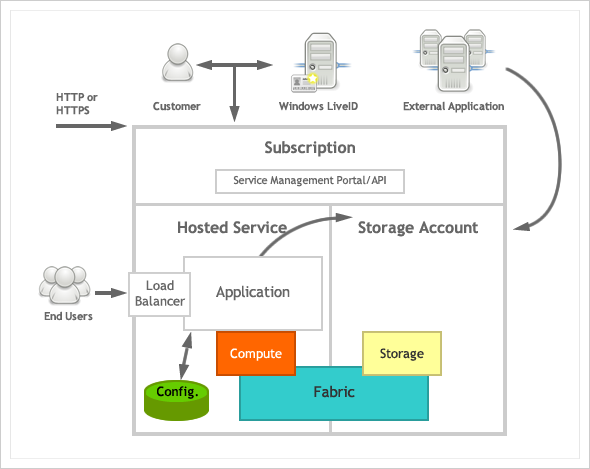Windows Azure is a cloud services platform that serves as the development, service hosting and service management environment for the Windows Azure operating system. Windows Azure provides developers with on-demand compute and storage to host, scale, and manage web applications on the Internet through Microsoft datacenters.

With Windows Azure, Microsoft hosts data and programs belonging to customers. Windows Azure must therefore address information security challenges above and beyond traditional on or off-premises IT scenarios.
Windows Azure is designed to abstract much of the infrastructure that typically underlies applications (servers, operating systems, web & database software, and so on) so that developers can focus on building applications
Windows Azure provides two primary functions: cloud-based compute and storage, upon which customers build and manage applications and their associated configurations. Customers manage applications and storage through a subscription. A Subscription is created typically by associating new or existing credentials with a credit card number on the Subscription portal web site. Subsequent access to the Subscription is controlled by a Windows Live ID. Windows Live ID is one of the longest-running Internet authentication services available, and thus provides a rigorously tested gatekeeper for Windows Azure. A subscription can include zero or more Hosted Services and zero or more Storage Accounts. A Hosted Service contains one or more deployments. A deployment contains one or more roles. A role has one or more instances. Storage Accounts contain blobs, tables, and queues. The Windows Azure drive is a special kind of blob. Access control for Hosted Services and Storage Accounts is governed by the subscription. The ability to authenticate with the Live ID associated with the subscription grants full control to all of the Hosted Services and Storage Accounts within that subscription. Customers upload developed applications and manage their Hosted Services and Storage Accounts through the Windows Azure Portal web site or programmatically through the Service Management API (SMAPI). Customers access the Windows Azure Portal through a web browser or access SMAPI through standalone command line tools, either programmatically or using Visual Studio.
Have you tried Windows Azure? What’s your opinion about it?
